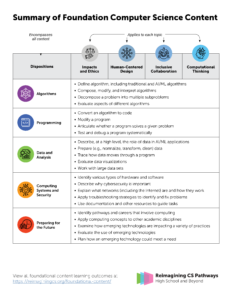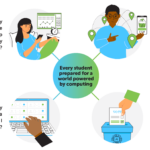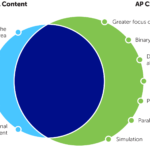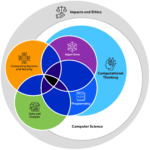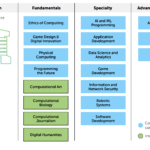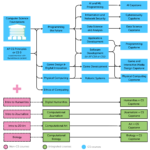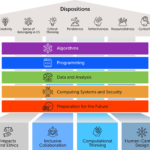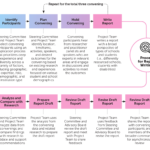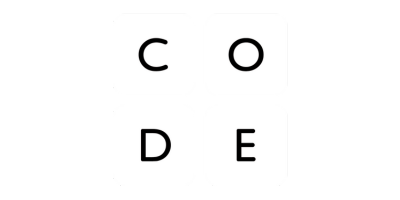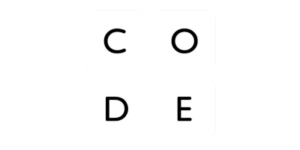Additional Resources
Personas
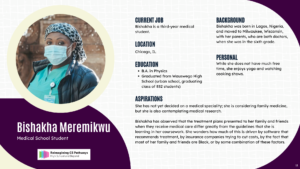 CSTA and IACE developed 13 personas of future high school graduates with different backgrounds, experiences, and interests and placed them in their future lives in the year 2037. These personas can be used to articulate the essential computer science content that all high school students learn. Small groups of participants are presented with these personas and asked to consider what CS content learned in high school would have best prepared these people for their current life circumstances, including but not limited to their occupations. This file includes the 13 personas, plus an explanation, suggested activity protocol, and facilitation guidance.
CSTA and IACE developed 13 personas of future high school graduates with different backgrounds, experiences, and interests and placed them in their future lives in the year 2037. These personas can be used to articulate the essential computer science content that all high school students learn. Small groups of participants are presented with these personas and asked to consider what CS content learned in high school would have best prepared these people for their current life circumstances, including but not limited to their occupations. This file includes the 13 personas, plus an explanation, suggested activity protocol, and facilitation guidance.
Selecting Pathways
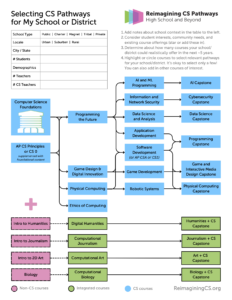 This handout supports teachers and administrators in selecting CS pathways for their high school or district. It includes many example pathways from the Reimagining CS Pathways project and prompts educators to select relevant courses and pathways based on student interests, community needs, and existing course offerings. Pathways offer opportunities for specialization in AI, cybersecurity, data science, game and interactive media design, physical computing, andprograming. Plus, there are examples of X + CS integrated pathways involving humanities, journalism, art, and biology.
This handout supports teachers and administrators in selecting CS pathways for their high school or district. It includes many example pathways from the Reimagining CS Pathways project and prompts educators to select relevant courses and pathways based on student interests, community needs, and existing course offerings. Pathways offer opportunities for specialization in AI, cybersecurity, data science, game and interactive media design, physical computing, andprograming. Plus, there are examples of X + CS integrated pathways involving humanities, journalism, art, and biology.
Foundation Summary
This table summarizes learning outcomes of the Reimagining CS foundational content to provide a shorter, high-level overview. The foundational CS content is organized into Topic Areas, Pillars, and Dispositions. The Topic Areas, which reflect the content that is essential for all high school graduates, are 1) Algorithms, 2), Programming, 3) Data and Analysis, 4) Computing Systems and Security, and 5) Preparation for the Future. The Pillars, which reflect essential ideas and practices that cut across all of the Topic Areas, are 1) Impacts and Ethics, 2) Inclusive Collaboration, 3) Computational Thinking, and 4) Human-Centered Design.
Comparison with 2017 Standards
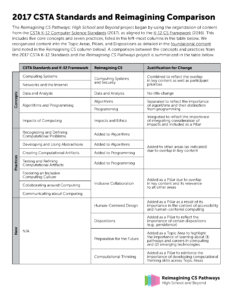 The Reimagining CS Pathways project began by using the organization of content from the CSTA K-12 Computer Science Standards (2017), as aligned to the K-12 CS Framework (2016). This includes five core concepts and seven practices, listed in the left-most columns in the table below. We reorganized content into the Topic Areas, Pillars, and Dispositions as detailed in the foundational content (and noted in the Reimagining CS column below). A comparison between the concepts and practices from the 2017 CSTA K-12 Standards and the Reimagining CS Pathways project is summarized in this table.
The Reimagining CS Pathways project began by using the organization of content from the CSTA K-12 Computer Science Standards (2017), as aligned to the K-12 CS Framework (2016). This includes five core concepts and seven practices, listed in the left-most columns in the table below. We reorganized content into the Topic Areas, Pillars, and Dispositions as detailed in the foundational content (and noted in the Reimagining CS column below). A comparison between the concepts and practices from the 2017 CSTA K-12 Standards and the Reimagining CS Pathways project is summarized in this table.
Interim Report #1
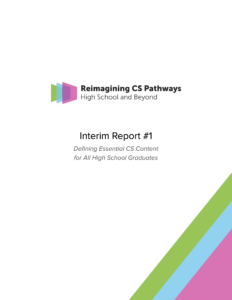 The first interim report from the Reimagining CS Pathways: High School and Beyond project provides a draft definition of the essential computer science content for all high school graduates. This was published in January 2024, following the first phase of the project. A primary source of data was an in-person convening of K-12 educators, higher education faculty, and industry held in November 2023.
The first interim report from the Reimagining CS Pathways: High School and Beyond project provides a draft definition of the essential computer science content for all high school graduates. This was published in January 2024, following the first phase of the project. A primary source of data was an in-person convening of K-12 educators, higher education faculty, and industry held in November 2023.
Interim Report #2
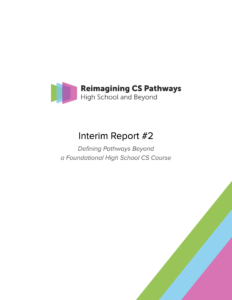 The second interim report provides draft pathways for continued computer science learning beyond a foundational high school course. It includes content progressions for seven specialty areas including programming, AI, cybersecurity, data science, physical computing, game design, and X+CS. It also includes example course pathways showing how these content progressions could be implemented as courses. This report was published in April 2024, following the second phase of the project. A primary source of data was the second in-person convening of K-12 educators, higher education faculty, and industry held in January 2024.
The second interim report provides draft pathways for continued computer science learning beyond a foundational high school course. It includes content progressions for seven specialty areas including programming, AI, cybersecurity, data science, physical computing, game design, and X+CS. It also includes example course pathways showing how these content progressions could be implemented as courses. This report was published in April 2024, following the second phase of the project. A primary source of data was the second in-person convening of K-12 educators, higher education faculty, and industry held in January 2024.

